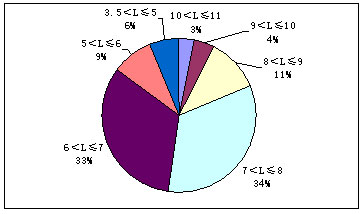Summarize:
www.chinabuses.org:
Feature Three: The Midwest China starts to develop bus markets
According to the research center data from www.chinabuses.com, in Jan.- May 2012,the bus sales of China main regional areas show as the following table.
Table Two: Sales data of bus products in different regional areas in Jan.-May 2012
|
|
Beijing
|
Shanghai
|
Tianjin
|
Chongqing
|
Anhui
|
Fujian
|
|
2011
|
1955
|
2214
|
1332
|
1806
|
2381
|
5510
|
|
2012
|
2092
|
2027
|
1630
|
2417
|
3303
|
4826
|
|
Growth Rate
|
7%
|
-8%
|
22%
|
34%
|
39%
|
-12%
|
|
|
Gansu
|
Guangdong
|
Guangxi
|
Guizhou
|
Hainan
|
Hebei
|
|
2011
|
1385
|
4414
|
2075
|
1823
|
1079
|
2740
|
|
2012
|
1608
|
4322
|
2899
|
2304
|
1262
|
3050
|
|
Growth Rate
|
16%
|
-2%
|
40%
|
26%
|
17%
|
11%
|
|
|
Henan
|
Heilongjiang
|
Hunan
|
Hubei
|
Jilin
|
Jiangsu
|
|
2011
|
5297
|
1834
|
2771
|
3121
|
2230
|
6536
|
|
2012
|
4839
|
2220
|
2145
|
3565
|
2923
|
4581
|
|
Growth Rate
|
-9%
|
21%
|
-23%
|
14%
|
31%
|
-30%
|
|
|
Jiangxi
|
Liaoning
|
Inner Mongolia
|
Ningxia
|
Qinghai
|
Shandong
|
|
2011
|
1566
|
2276
|
975
|
854
|
623
|
4845
|
|
2012
|
1284
|
3349
|
1445
|
1336
|
515
|
6221
|
|
Growth Rate
|
-18%
|
47%
|
48%
|
56%
|
-17%
|
28%
|
|
|
Shanxi
|
Shaanxi
|
Sichuan
|
Xinjiang
|
Yunnan
|
Zhejiang
|
|
2011
|
1363
|
2319
|
3513
|
912
|
1206
|
2749
|
|
2012
|
1383
|
2253
|
3351
|
1339
|
1288
|
2635
|
|
Growth Rate
|
1%
|
-3%
|
-5%
|
47%
|
7%
|
-4%
|
From above data, it is seen that
Since 2012, the bus sales growth rate in Anhui Province, Guangxi Province, Shandong Province, China's Northeast three provinces, Ningxia and Inner Mongolia etc Midwest of China are much higher than the traditional regional areas, such as Guangdong Province and Zhejiang Provinces etc. The main reason is the fast development of the economic in Midwest of China. The bus builders should pay high attention on such changes.
The bus market capacity of Shandong Province is now in the No.1 place. Meanwhile, Fujian Province, Henan Province, Hubei Province, Jiangsu Province and Guangdong Province are still the main regional markets for the bus industry. But from the above data, it is seen that the market of Midwest of China becomes another main development force.
Feature Four: The school bus market is now experienced from the peak to the steady
On April 10th, 2012, the State Council released the "Regulation on School Bus Safety Management". On April 12th, National Bureau of Quality Inspection released "Professional School Bus Standards", which was officially implemented On May 1. Since the regulation and the standards were released,the school bus began rapid marketization. But due to the related state financial subsidies is not obvious and the uncertain state orientation of the school bus, since April and May, the sales of the school bus markets become steady.
The sales volume of the school bus in the first five months in 2012 are 10,022 units, which accounts for 11.07 percent of the total bus sales. In May, the sales volume of the school bus are 1,537 units, which shows the sale trend of the school bus becomes steady.
Among the 50 bus builders, there are 22 bus builders that manufacture school buses. The top three bus builders are Yutong Bus, Chang'an Bus, Zhongtong Bus. The sales volume of the Zhongtong Bus 3,019 units, which accounts for 30.12 percent of the school bus total sales volume, which ranks the top one place in the school bus markets.

Chart Three: Sales data of school bus products in different lengths in Jan.-May 2012
From above data, it is seen that
1. From the school bus market, the main demanding products are in 6m-8m long, which account for nearly 70 percent of the overall school bus demanding products. But demands and models of the school buses above 10 meters long are relatively small.
2. Regarding the regional markets demands on the school bus, the biggest school bus regional markets are in Guangdong Province, Guangxi Province, the China's Northeast, Henan Province and Shandong Province. Their total market shares are above 60 percent. Compared to traditional main regional bus markets, the regional markets on the school buses are so different from the traditional bus products.
